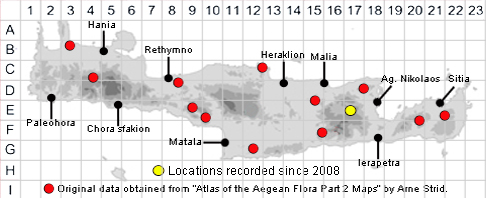
SPECIES DESCRIPTION
LUPINUS ALBUS
Family and Genus:- See- LEGUMINOSAE
Common Names:- White lupin
Homotypic Synonyms:- None
Meaning:- Lupinus. The ancient Latin name for the white lupin.
Albus (L) Bright, dead-white.
General description:- Sparsely patent-pilose annual.
Stems:-
1) Erect, generally 15-50 cm.
Leaves:-
1) Long-petiolate, digitate. mucronulate. subglabrous above, sparsely villous
beneath.
2) Leaflets.
a) lower, 25-35 x 14-18 mm, obovate.
b) upper, 40-50 x 10-15 mm cuneate.
3) Stipules, setaceous.
Flower:-
1) Alternate or sometimes indistinctly whorled, in terminal racemes, 4-10 cm.
2) Calyx, 2-lipped, densely pilose,
a) upper lip shallowly bidentate.
3) Corolla, 12-16 mm, pale blue,
a) keel, pale blue at the apex, almost equalling the wings.
4) Stamens, monadelphous.
Fruit:-
1) Legume, 80-100 x 17-20 mm, becoming longitudinally rugulose, shortly-villous,
glabrescent, yellow.
2) Seeds, 12-14 mm, orbicular-quadrangular, compressed or depressed, smooth
and dull, light yellow, unspotted.
Key features:-
1) Seeds, 12-14 mm, dull.
2) Upper lip of the calyx shallowly bidentate.
Habitat:- Dry open shrubby vegetation, mixed scrub, olive groves, roadsides. 0-900
m.
Distribution:- From Crete and Yugoslavia eastwards, but widely cultivated in the
W. Mediterranean. Limited distribution across Crete
Flowering time:- Late Mar to early May.
Photos by:- Steve Lenton
